Great choice! Your favorites are temporarily saved for this session. Sign in to save them permanently, access them on any device, and receive relevant alerts.
- Sailboat Guide
Bullseye is a 15 ′ 8 ″ / 4.8 m monohull sailboat designed by Nathaniel G. Herreshoff and A. Sidney DeWolf Herreshoff and built by Quincy Adams Yacht Yard, Herreshoff Mfg. Co., and Cape Cod Shipbuilding starting in 1914.

- 2 / 7 Marion, MA, US 1971 Bullseye $9,000 USD View
- 3 / 7 Cranberry Isles, ME, US 1961 Bullseye $8,500 USD View
- 4 / 7 Marion, MA, US 1971 Bullseye $9,000 USD View
- 5 / 7 Cranberry Isles, ME, US 1961 Bullseye $8,500 USD View
- 6 / 7 Marion, MA, US 1971 Bullseye $9,000 USD View
- 7 / 7 Marion, MA, US 1971 Bullseye $9,000 USD View

Rig and Sails
Auxilary power, accomodations, calculations.
The theoretical maximum speed that a displacement hull can move efficiently through the water is determined by it's waterline length and displacement. It may be unable to reach this speed if the boat is underpowered or heavily loaded, though it may exceed this speed given enough power. Read more.
Classic hull speed formula:
Hull Speed = 1.34 x √LWL
Max Speed/Length ratio = 8.26 ÷ Displacement/Length ratio .311 Hull Speed = Max Speed/Length ratio x √LWL
Sail Area / Displacement Ratio
A measure of the power of the sails relative to the weight of the boat. The higher the number, the higher the performance, but the harder the boat will be to handle. This ratio is a "non-dimensional" value that facilitates comparisons between boats of different types and sizes. Read more.
SA/D = SA ÷ (D ÷ 64) 2/3
- SA : Sail area in square feet, derived by adding the mainsail area to 100% of the foretriangle area (the lateral area above the deck between the mast and the forestay).
- D : Displacement in pounds.
Ballast / Displacement Ratio
A measure of the stability of a boat's hull that suggests how well a monohull will stand up to its sails. The ballast displacement ratio indicates how much of the weight of a boat is placed for maximum stability against capsizing and is an indicator of stiffness and resistance to capsize.
Ballast / Displacement * 100
Displacement / Length Ratio
A measure of the weight of the boat relative to it's length at the waterline. The higher a boat’s D/L ratio, the more easily it will carry a load and the more comfortable its motion will be. The lower a boat's ratio is, the less power it takes to drive the boat to its nominal hull speed or beyond. Read more.
D/L = (D ÷ 2240) ÷ (0.01 x LWL)³
- D: Displacement of the boat in pounds.
- LWL: Waterline length in feet
Comfort Ratio
This ratio assess how quickly and abruptly a boat’s hull reacts to waves in a significant seaway, these being the elements of a boat’s motion most likely to cause seasickness. Read more.
Comfort ratio = D ÷ (.65 x (.7 LWL + .3 LOA) x Beam 1.33 )
- D: Displacement of the boat in pounds
- LOA: Length overall in feet
- Beam: Width of boat at the widest point in feet
Capsize Screening Formula
This formula attempts to indicate whether a given boat might be too wide and light to readily right itself after being overturned in extreme conditions. Read more.
CSV = Beam ÷ ³√(D / 64)
Originally designed and built by Nat Herreshoff of wood in 1914 and called the HERRESHOFF BULL’S EYE. In 1938 she was modified with an above transom tiller, and named The FISHERS ISLAND SOUND BULL’S EYE. In 1947 the rights to the design were purchased by Cape Cod Shipbuilding Co. In 1949 a fiberglass version of the FISHERS ISLAND SOUND BULL’S EYE was introduced (overseen by Sidney Herreshoff) that also featured a cuddy cabin and modern marconi rig on an aluminum spar. This became the THE CAPE COD BULL’S EYE. (pictured here) Throughout the evolution of different decks and rigs, the hull design has remained unchanged from the original first built at Herreshoff Mfg. Co.
Embed this page on your own website by copying and pasting this code.

Discover Related Sailboats

Herreshoff 12 1/2
- About Sailboat Guide
©2024 Sea Time Tech, LLC
This site is protected by reCAPTCHA and the Google Privacy Policy and Terms of Service apply.
Class Contact Information
Click below
Class Email
Class Website
One-Design Class Type: Keelboat
Was this boat built to be sailed by youth or adults? Both
Approximately how many class members do you have? 300
Join/Renew Your Class Membership – Click here
Photo Credit:Bullseye Nationals 2011
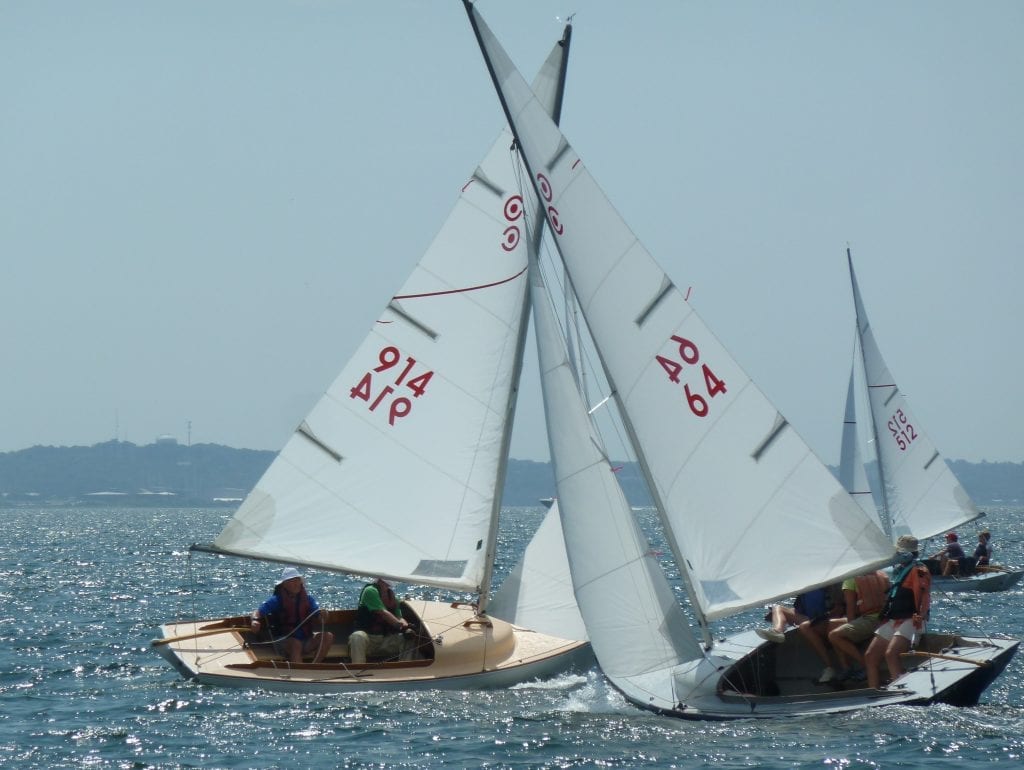
Photo Credit: Bullseye Nationals 2011
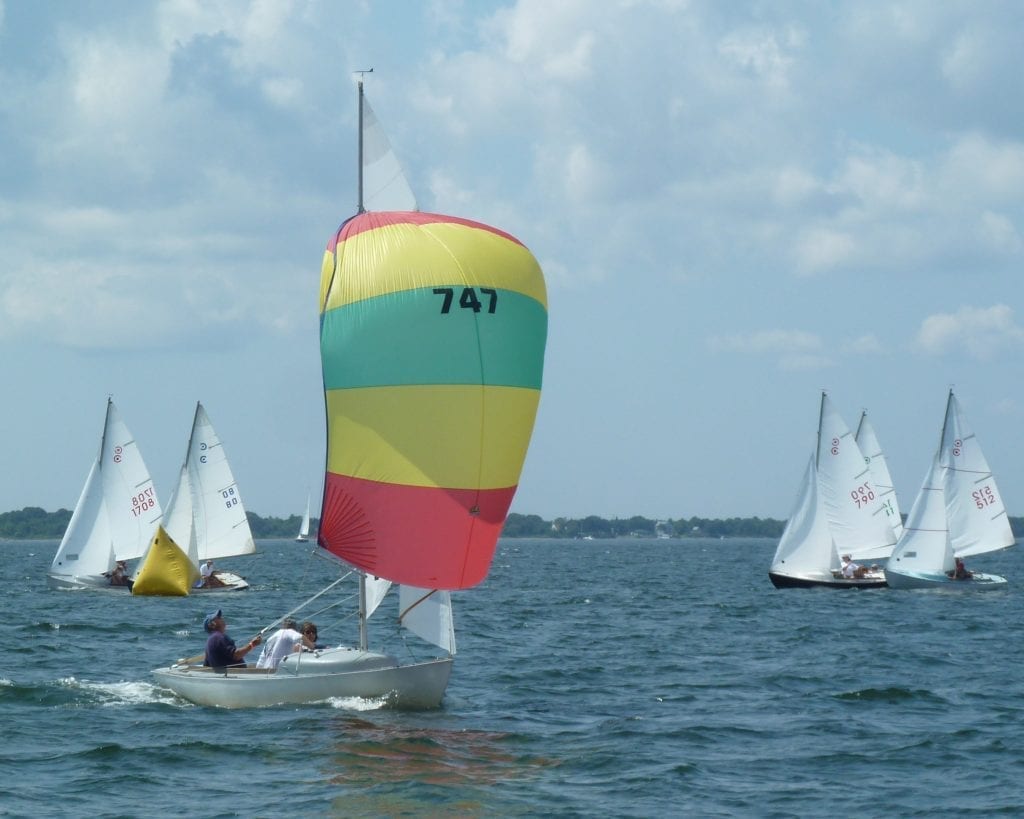
About Bullseye
The Bullseye is a Herreshoff Design measuring just under 16 feet. A sturdy and seaworthy boat, the Bullseye is ideal for family day sailing and learn to sail programs. with active racing fleets in the Northeast and Florida, the Bullseye Sailing Association sponsors an annual National Regatta that rotates between active fleets in Maine, Massachusetts, New York, and Florida. A semi-annual newsletter contains sailing results from local fleets, tips on maintenance and care for the boat, and stories of sailing exploits from members around the country.
Boats Produced: 1000
Class boat builder(s):
Cape Cod Shipbuilding
Approximately how many boats are in the USA/North America? 700
Where is your One-Design class typically sailed in the USA? List regions of the country:
New England, Northeast, Florida Keys
Does this class have a spinnaker or gennaker? Yes
How many people sail as a crew including the helm? 2 or 3
Ideal combined weight of range of crew: 400
Boat Designed in 1940
Length (feet/inches): 15′ 8.5″
Beam: 5′ 10″
Weight of rigged boat without sails: 1350
Draft: 2′ 5″
Mast Height: 22′
Class Rules (PDF Doc)
Back to One-Design Central
Copyright ©2018-2024 United States Sailing Association. All rights reserved. US Sailing is a 501(c)3 organization. Website designed & developed by Design Principles, Inc. -->

Bull’s Eye
Designed by: captain nathanael herreshoff.
Based on the Herreshoff H-12½ design, the Bull’s Eyes deck has been modified to handle stronger winds and seas yet the hull shape remained unchanged. She carries all of the same sailing characteristics as the Herreshoff H-12½ providing the seaworthiness that has made the design so famous. The Bull’s Eye has a nice size cockpit that will comfortably accommodate 4 or 5 adults however, can be easily single handed with her self tending jib. With the optional trailer the Bull’s Eye can be launched and rigged at a ramp. The Bull’s Eye has active one-design racing fleets from Florida to Maine and an active national association.
New Boat Options
Bulls eye (standard) - white full/standard colored deck..........$36,300.00.
Name painting & delivery also available
Prices subject to 6.25% Massachusetts Sales Tax, if applicable
© 2024 Cape Cod Shipbuilding Co. ®, Wareham MA USA [email protected]

Search form

A Sailing Misadventure
Lessons learned from high winds and a swamped boat.
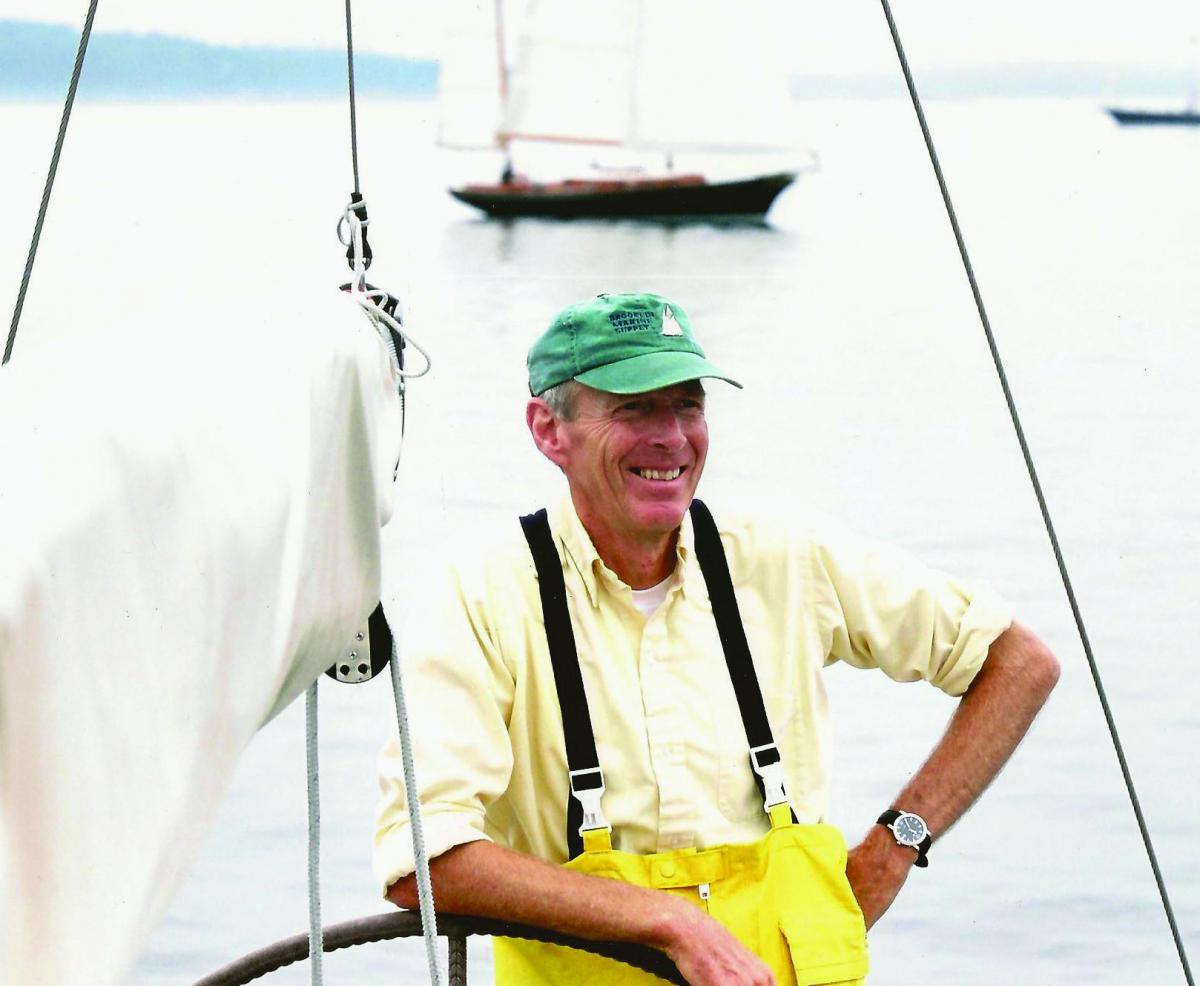
Reaching southeastward along the Deer Isle shore in 10 knots of southwest breeze in my Bulls-Eye Nugget , I savored the warmth and the easy tug of the tiller. Then the wind shifted suddenly to the northwest. In an instant I was sailing downwind in a noticeably increasing breeze.
Getting back to Center Harbor would be a hard thrash, with reefing essential. I checked my watch, worried about being home in time for an especially important conference call. Conditions were getting too wild to reef in mid-channel—easier to continue to the WoodenBoat mooring field and reef there. Nugget tore along on a fun sleigh-ride, although gusts now close to 30 knots were worrisome. WoodenBoat’s moorings are relatively exposed in a hard northwester, but I secured a mooring on my first pass as Nugget pitched madly and sails thundered. I lowered the sails, temporarily safe. The wind seemed slightly less, and there was still time to sail home for the scheduled telephone call, a call that was impairing my judgment and safety.
Bulls-Eyes are easy to reef. The boom slides off the mast, and the mainsail rolls around it like a window shade. I put in four rolls, more than ever before.
Under now-overcast skies, and with the water a hard, white-capped gray, I started toward home, which was a couple of miles upwind. Pleased with how well Nugget was handling the challenging conditions, I kept my weight as far outboard as possible. Spray blasted me as I feathered into the wind and luffed as necessary to minimize the heel angle and water slopping over the leeward coamings. On we plunged.
The wind increased more. The boat struggled and the water’s surface turned white as wave tops blew off. Perhaps I let down my guard for a second. Suddenly, the lee rail was under water and going deeper fast. I jammed the tiller to leeward in a frantic effort to come upright, but, sickeningly, I knew it was too late. Nugget was awash, with no way to bail because the boat was floating full of water at a 45-degree angle with the leeward coaming submerged.
I had two immediate thoughts: get the sails down, and will the boat stay afloat? Wondering how long we would float had to wait while I dealt with sails. The halyards were cleated at the base of the mast, now far under water. I did not relish a swim in the cold springtime water and its implications for hypothermia, but the sails had to be dealt with. I slid into the water, reached down, uncleated the halyards, and was back on the rail within seconds. I pulled the sails down, but the wind immediately blew the jib halfway up the headstay again. Moving fore and aft to tie up the sails was too risky. Going aft for the sail ties submerged the stern; moving toward the bow and the jib put the bow way down. I was going to have to perch on the rail on the high side, out of the water as much as possible, and let come what might.
“Ben, you are in a predicament!” I remember repeating to myself. There were no other boats visible—and late on such a windy May afternoon none were likely to appear. While I could see houses, they were mostly empty summer homes. Even if someone looked out, the boat and little white jib blowing in the wind would be hard to spot.
Nugget has buoyancy tanks. I had to will the possibility of leaks in those tanks out of my mind. I analyzed self-rescue possibilities. The outgoing tide was carrying me toward the Reach’s main channel. The wind direction was across the current. I might blow onto an island to leeward if the current did not lock me in its grasp. With the boat so full of water, I saw little hope of affecting the direction of travel, but if I passed close enough to an island to leeward, I could attempt to use the submerged rudder and the partly raised jib to try to steer onto the shore. The first island to which I might blow has a house and fireplace, perhaps even a working telephone. If I missed that and then blew near the two islands farther out, I might get ashore but have no place to get warm. For the moment, all islands were too far away. I mulled my fate, recognizing the irony in being so at risk in home waters in a small sailboat that I have sailed endlessly and that is known for its seaworthiness.
I never saw the yawl Katrinka approaching under power until she loomed close ahead. She steered inches from my windward side as two strong crew members stood by her lifelines. I put my feet on Nugget ’s rail and leapt. Both of my outstretched arms were grabbed, and I was hauled over her lifelines—safe and astounded.
Stammering heartfelt thanks, I introduced myself. Unfamiliar with the waters, Katrinka ’s crew had been powering around looking for a place to shelter. They told me that their anemometer showed the wind gusting to 35 knots.
They immediately expressed concern about Nugget ’s fate. Katrinka ’s professional captain was willing to try to tow her. I demurred. Katrinka ’s newly painted topsides and varnished rail were immaculate. I wanted no responsibility for risking their beautiful boat.
We turned away seeking shelter. Watching Nugget fall astern, I saw how difficult she was to see as the distance increased and I realized that the current would probably sweep her into Jericho Bay. Had I not been rescued, I might not have been spotted, nor would I have passed close enough to an island to get ashore.
The captain continued to think about trying to tow Nugget . With evidence of decreasing wind strength I finally relented. Back we powered. Using Katrinka ’s dinghy, the captain and I passed a towline around Nugget ’s mast. At a snail’s pace, we turned toward the WoodenBoat mooring area. There, the crew took me ashore to my wife, Dianna, who had been alerted by cell phone. The seamanship and hospitality of Katrinka ’s people were just outstanding. In their absence I do not know what would have happened to me.
Ben Emory is a lifelong sailor who splits his time between Salisbury Cove and Brooklin. When not on the water, he has spent decades actively involved in Maine land conservation.
Lessons Learned
Endless learning is a wonderful part of sailing’s pleasure. The near catastrophe described in the accompanying article about the swamping of a Cape Cod Bulls-Eye reminds all mariners of the following lessons:
- Be current on the weather forecast. Do not rely on what one thinks one heard the previous day, especially in early- and late-season sailing when conditions may be more changeable and harsher.
- No matter how much experience and confidence one has in a boat, remain realistic about its limitations.
- Do not let judgments about safety be clouded by other obligations, such as the “important” scheduled telephone call that preoccupied the author.
- If one does not usually wear a life jacket, be sure to wear one when you are sailing alone, especially when conditions turn dicey.
- Take a portable VHF radio with you, preferably in a waterproof bag.
- Tell someone where you are going and when you expect to return.
- Even deeply reefed sails and small jibs can be too big to be safe when the wind howls.
Related Articles
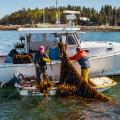
Share this article:

Digital Edition Available ×
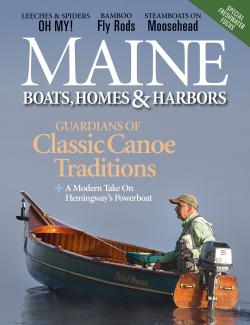
Can't get to the store to buy your magazine? We deliver the stories of Maine's coast right to your inbox. Sign up here for a digital edition .
2023 Maine Boat & Home Show ×

Join Us for the Maine Boat & Home Show !
Art, Artisans, Food, Fun & Boats, Boats, Boats
August 11 - 13, 2023 | On the waterfront, Rockland, Maine
Click here to pre-order your tickets.
Show is produced by Maine Boats, Homes & Harbors magazine.


The Features and Construction of the Bullseye Sailboat
Construction by the current boat builder, Cape Cod Shipbuilding Co. ® , begins by prepping and spraying the gelcoat into the molds. Fiberglass mat is then hand-laid into the gelcoat. The flat area of the deck is reinforced with Corecell, a structural closed cell foam core. This core material enhances rigidity of flat surfaces without problems of rot, delamination or saturation.
The hull, floor, and deck are then fiberglassed together, which also creates the two flotation tanks, one under the floor and the other in the bow. Together, these tanks keep the boat afloat when full of water.
The lead keel, weighing 750 lbs., is then externally installed with five stainless steel keelbolts. Not only is this ballast part of what makes her such a sturdy vessel, but if put aground, the keel absorbs the shock, making her a safe vessel.
In the final stages of construction, vinyl rubrail is installed for protection. Teak toerails and coamings are handmade, and installed with screws and bungs. The varnished ash tiller and fiberglass rudder are attached with pintles and gudgeons.
The Zephyr aluminum mast and boom come standard with roller reefing boom and stainless steel standing rigging with turnbuckles. The varnished spruce self-tacking jib club comes standard with every Bullseye. This allows the skipper to tack the boat without adjusting the jib sheet. The jib club is bent to giver the working jib shape on either tack.
Any one design that has been in steady construction since the 50's is proof of its success. Boats built then are still competitively racing with boats built today.

Optional Items Available
- Colored Hull (gelcoat) - (colored boot strip included)
- Boot stripe (gelcoat) - if opting for white hull
- Mainsail & Working Jib (Quantum/Thurston) w/sail bag & battens
- Racing Mainsail & Working Jib (Quantum Thurston) w/ sail bag & battens
- Racing Mainsheet package in lieu of standard mainsheet
- Genoa w/sheets
- Genoa Gear installed, adjustable track/blocks
- Spinnaker .75 oz (choice of 3 colors)
- Spinnaker Gear installed
- Cockpit Cover Acrylic (Thurston) (choice of colors)
- Jib cover acrylic (Thurston) not recommended in rough weather
- Trailer galvanized w/screw poppits, 2” ball coupler & flat electric plug
- Trailer tie down package (straps & carriers)
- Trailer Keel Guides
- Rough terrain (pneumatic castor) launching tire
- Lifting Sling w/ SS eye bolt
- Outboard Bracket installed (bronze)
- Seat Cushions
- Boom Vang installed - Harken Carbo (at mast strp & boom)
- Winches on Cuddy w/ clamcleats (see next line item)
- Reinforcement for cockpit cover when ordering above
- Compass in well cover RU-90
- Hand rails on cuddy (teak)
- Hiking Stick (removable) Forespar
- Winter cover, heavy duck w/supports
- Wind Indicator installed
- Ladder installed - Stainless steel, foldable, removable
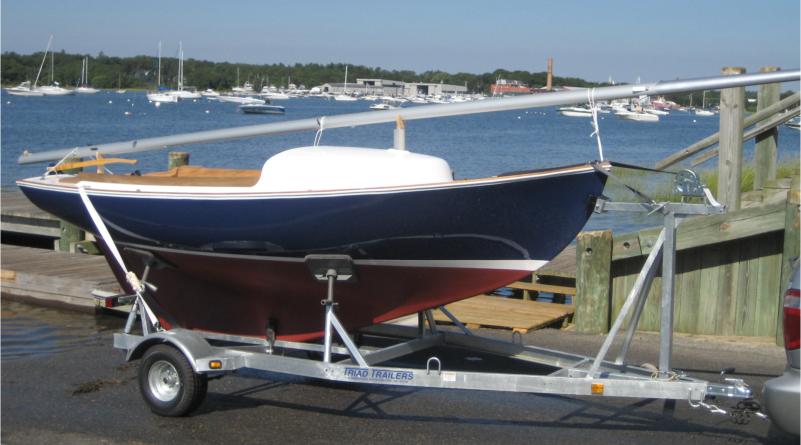
© 2024 Bullseye Sailing Association, c/o 37 High Street, Rockport, MA 01966 Logged in email account:


COMMENTS
Notes. Originally designed and built by Nat Herreshoff of wood in 1914 and called the HERRESHOFF BULL'S EYE. In 1938 she was modified with an above transom tiller, and named The FISHERS ISLAND SOUND BULL'S EYE. In 1949 a fiberglass version of the FISHERS ISLAND SOUND BULL'S EYE was introduced (overseen by Sidney Herreshoff) that also featured a ...
The Bull's Eye is a recreational keelboat, built predominantly of wood and later of fiberglass, with teak wood trim. It has a fractional sloop rig, a spooned raked stem , a raked transom, a keel -mounted rudder controlled by a tiller and a fixed long keel. It displaces 1,350 lb (612 kg) and carries 750 lb (340 kg) of lead ballast.
Bullseye is a 15′ 8″ / 4.8 m monohull sailboat designed by Nathaniel G. Herreshoff and A. Sidney DeWolf Herreshoff and built by Cape Cod Shipbuilding, Quincy Adams Yacht Yard, and Herreshoff Mfg. Co. starting in 1914. ... <16: under powered. 16-20: good performance >20: high performance. Ballast/Displacement 55.6
The Evolution of the Bullseye Sailboat. The shape of this hull was designed by Nat Herreshoff in 1914 and built by Herreshoff Manufacturing Co. in wood. Originally named the Herreshoff Bull's Eye, and nicknamed the 12½ for her water line length, she was available in gaff or Marconi rig with a thin waterway and through the transom tiller. In ...
About Bullseye. The Bullseye is a Herreshoff Design measuring just under 16 feet. A sturdy and seaworthy boat, the Bullseye is ideal for family day sailing and learn to sail programs. with active racing fleets in the Northeast and Florida, the Bullseye Sailing Association sponsors an annual National Regatta that rotates between active fleets in Maine, Massachusetts, New York, and Florida.
Winter cover, heavy duck w/supports. $1,686.25. Wind Indicator installed. $145.00. Ladder installed - Stainless steel, foldable, removable. $810.00. Name painting & delivery also available. Cape Cod Shipbuilding Co. has been manufacturing, maintaining and providing storage since 1899 for fine quality, pleasure sailboats in the Buzzards Bay area ...
The Bullseye class sailing association is the national organization for the regulation and promotion of the Bullseye one-design sailboat. ... 16 ss oval head or flat head bolts, 1 1/2 inches long; 16 ss lock nuts; 16 ss finish washers; Parts above for 4 under or behind seat bags of about 30' x 10"dia.
Cape Cod Shipbuilding Bullseye, 16', 1962 15'9" LOA 29" draft 5'8" beam 1350 gross wt 750 lbs lead ballast in keel keel stepped mast, 3 point rig(no backstay) hull number 4962 sail number 400 boat location: Glenside, PA (suburban Phila)
2'5'. Florida. $9,000. Description: 1959 but factory refurbished to like new condition. dark blue hull wight blue bottom white boot stripe nd deck. Like new mahogany seats. Equipment: good sails including a like new spinnaker with pole and all rigging.
The Herreshoff Bull's Eye or Bullseye, is an American trailerable sailboat that was designed by Nathanael Greene Herreshoff and first built in 1914. Introduction Herreshoff Bull's Eye Production
Lessons learned from high winds and a swamped boat. By Ben Emory. Ben Emory, at the helm of his Finngulf 391 West Wind, is an experienced sailor. But he learned a few important lessons after a harrowing spring sail on his Cape Cod Bulls-Eye. Photo by Jamie Schapiro A Cape Cod Bulls-EyE is one tough sailboat. Built in fiberglass to the same hull ...
Remarks: This Bullseye has been in the family for a long time- re-gel coated in 2014 new varnishing, and bottom paint 2018. For Sale - $14,000 Owner: Theodore and Suzanne Murphy, North Smithfield, RI 02896 Phone: Cell 401-636-0203, 401-651-1957, e-mail; [email protected] or [email protected] Boat location: Winter Harbor, Maine Sail # 901, Boat ...
28' Cape dory yachts Cape Dory 28 Pepperrell Cove Kittery Point, Maine Asking $13,900
Cape Cod Bullseye sailboat. Refitted in 2004 and 2018 by manufacturer, Cape Cod Shipbuilding. Yamaha 2.5 HP Long Shaft new 2018. Less than 5 hours. TRIAD Trailer, new 2018. Less than 30 Miles. Main, Jib, genoa, boom vank other items For detail specifications on model go to capecodshipbuiler.com.
The Bullseye class sailing association is the national organization for the regulation and promotion of the Bullseye one-design sailboat. ... The Bullseye Sailing Association Rules. Adopted April 16, 2011 Amended May 3, 2020. Table of Contents. COVER PAGE; PART I - CONSTITUTION.
Some of the best-known Herreshoff models currently listed include: Watch Hill 15, 12 1/2, 38, Schooner and 1993 Buzzards Bay 15 Centerboard. Various Herreshoff models are currently offered for sale by specialized yacht brokers, dealers and brokerages on YachtWorld, with listings ranging from 1902 year models up to 2023.
Cape Cod Shipbuilding Cape Cad Bullseye: Length: 15'8' Beam: 5'10' Draft: 2.5' Year: 2009: Type: daysailer: Hull: fiberglass monohull: ... 19' Flying Scot Sailboat Michigan Asking $24,900. 29' Hunter 29.5 Lake Travis Sail and Ski Marina, Texas ... 16.5'' Rebel 16.5' Auburn, California Asking $3,250. 60' Alan Buchanan custom steel ketch Bocas ...
The Features and Construction of the Bullseye Sailboat. Construction by the current boat builder, Cape Cod Shipbuilding Co. ®, begins by prepping and spraying the gelcoat into the molds. Fiberglass mat is then hand-laid into the gelcoat. The flat area of the deck is reinforced with Corecell, a structural closed cell foam core.
Go to Sailing Texas classifieds for current sailboats for sale . Cape cod Bullseye, 16', 1977 Hull#5-77 Location: Stuart, Florida Equipment: All sails and sail covers Electric motor and trailer Condition: excellent
Gaff rig until 1936. From 1937 onwards, one could choose either a gaff or Marconi rig. The original boats were built by Herreshoff Manufacturing beginning in 1914 (357). From 1943 to 1948, more were built by Cape Cod Shipbuilding (34 + 200, later in fiberglass), as well as the Quincy Adams Yacht Yard (51). Cape Cod Shipbuilding came out with ...
Annual meeting of the Bullseye Sailing Association on Sunday April 28, 2024 at 4 PM EDT by zoom. A link will be sent to everyone a few days before the meeting. 2023 Annual Meeting. 2024 Agenda. 2024 Proxy. Wishbone Report. Technical Specifications. Jib Lead Change Discussion.
For owners, fans and friends of Cape Cod Shipbuilding's Bullseye one-design sailboat.
The Bullseye class sailing association is the national organization for the regulation and promotion of the Bullseye one-design sailboat. ... 16: 4: 811: Andy Cornah Jenn Lancaster: TA [6] 5: 6: 6: 4: 5: 2: 28: 5: 891: ... successors and assigns, hereby waive any and all claims, actions, suits and demands against the Bullseye Sailing ...